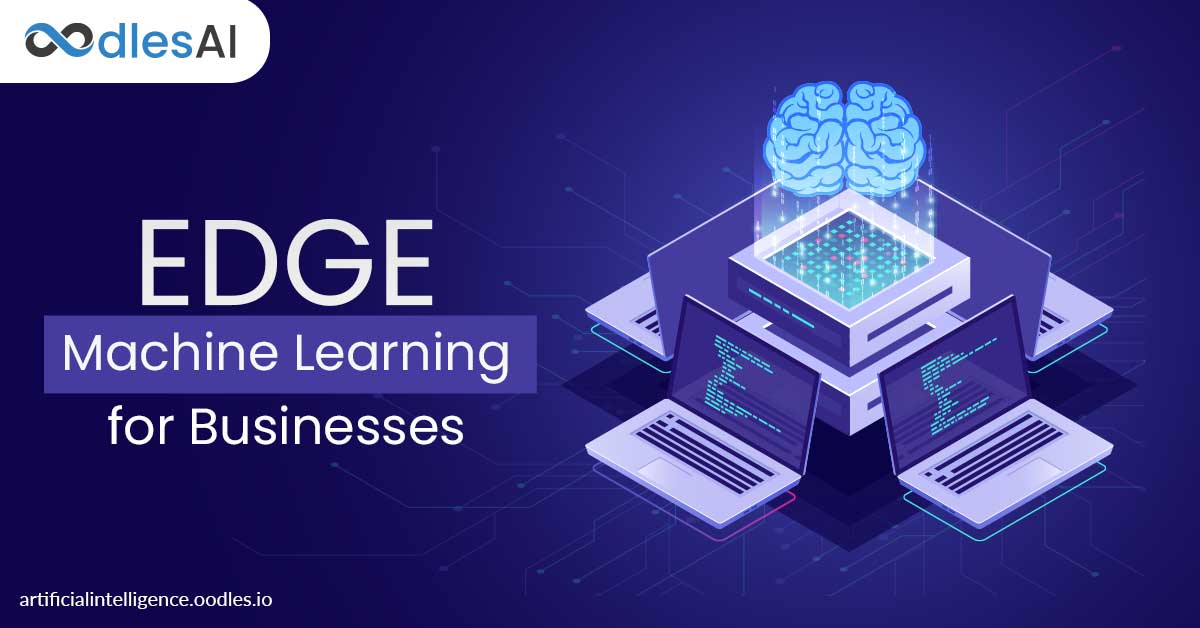Significance and Deployment of Edge Machine Learning for Businesses
Sanam Malhotra | 8th March 2020

Artificial Intelligence (AI) and Machine Learning (ML) continue to disrupt legacy business processes with expansive integration capabilities. In a bid to match enterprise processor power demands, providers of machine learning development services are extending support to hardware devices. Edge machine learning is emerging as an effective substitute for cloud-based infrastructures to build and deploy enterprise ML models. From image recognition to predictive analytics, let’s explore how your business can experience automation in a cost-effective yet efficient way with edge machine learning mechanisms.
Understanding Edge Machine Learning
Edge machine learning (ML) refers to the practice of processing ML algorithms and data over local devices. It is contrary to the enterprise practice of training ML models in the cloud and uploading algorithms into the device. Under this mechanism, everything from data flow to the development and training of ML models is done on the device itself.
Several intelligent hardware products supporting edge machine learning include YOLO, MobileNets, Solid-state Drive (SSD), and Azure FPGA (Field-programmable Gate Arrays). Among these, FPGAs are emerging as more flexible and efficient mechanisms to implement ML logic.

While CPUs and GPUs can be used for edge machine learning, their performance is slower and unscalable as compared to FPGAs and ASICs, explains Microsoft.
Significance of Edge Machine Learning
1) Reduces Latency
Accuracy and real-time efficiency are the two most critical grounds of artificial intelligence services to automate business operations. However, it is observed that heavy ML inferences such as making predictions or classifications on the cloud slow down the model performance drastically.
“Raw performance is technologically inspiring, but there are a lot of metrics that matter just as much if not more than performance.”
– Doug Burger, technical fellow in Azure hardware division
Edge machine learning provides a distributed computing paradigm that bridges the gap between data storage and the sensor location. It leads to improved response time and reduced network latency. Better connectivity strengthens machine learning applications such as-
a) Real-time Object Recognition
With in-house models, manufacturing businesses can accelerate AI-powered object recognition for detecting product quality in near-real-time.
b) Accurate Predictions
Healthcare businesses can significantly benefit from machine learning models deployed on the edge. It enables analysts and physicians to predict the health of critical assets.
2) Improves Performance
Model performance is another crucial factor in achieving desirable ML outcomes. While model training over the cloud simplifies development, it usually sacrifices accuracy and numerical precision when migrated to local hardware.
Edge ML improves model performance by reducing the associated mathematical computations required. It is achieved by using structured data sets for more efficient and less complex operations of neural networks. However, to achieve a phenomenal performance, it is important that edge devices are versatile enough to process different types of data.
3) Curtails Operational Costs and Strengthens Security
With growing expenses for training ML models, enterprises are exploring more economic and seamless options to deploy AI and machine learning techniques. Operational cost for hosting ML models shoots exponentially as the data size expands along with system bandwidth.
Along with scalability, machine learning on the edge also addresses the cost and security challenges for businesses. Businesses are able to curb the expenses involved in model training by making a one-time investment into efficient hardware devices.
Here are some other benefits of deploying machine learning on the edge-
a) Edge devices in bulk are cost-effective
b) Edge devices facilitate complete control over business data as compared to third-party commercial servers
c) In-house ML models can be easily customized to build domain-specific solutions
Initiate Edge Machine Learning with Oodles AI
The advent of artificial intelligence is followed by a wave of business initiatives to embed automation into their key processes. At Oodles, we are constantly evolving our artificial intelligence techniques to match enterprise AI requirements. Under machine learning, our objective is to build efficient and scalable ML models with minimal resources and operational cost involved.
Our AI and ML development team process complex business datasets to train function-specific ML models. With experiential knowledge in both on-premise and cloud-based ML training, our AI capabilities include the following-
a) Near-real-time image classification and object detection
b) Accurate predictive analytics
c) Precise natural language processing
d) Scalable text classification and analytics, and more.
To know how we can serve your business, reach out to our AI development team.



